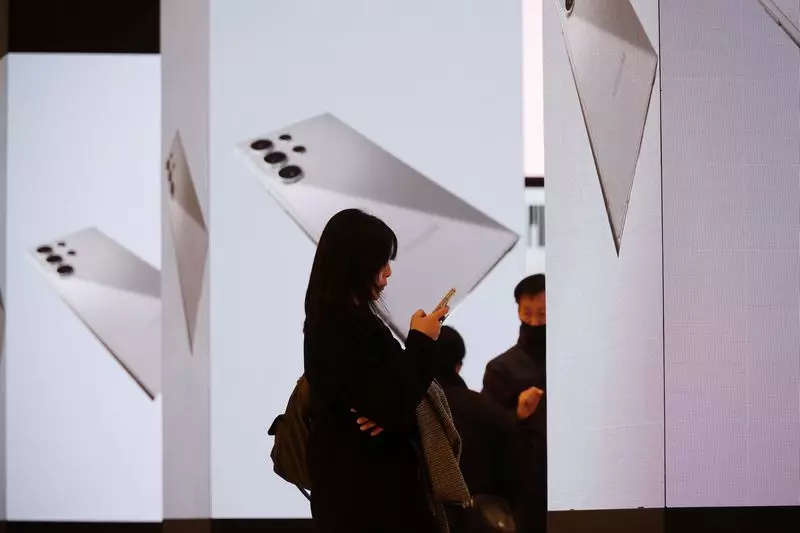Samsung Electronics has reported an impressive jump in its third-quarter profit, signaling marked year-over-year growth. For the period encompassing July to September, the tech giant’s operating profit reached 9.2 trillion won (approximately $6.66 billion), a significant rise from the 2.4 trillion won recorded during the same timeframe last year. However, while the figures sound positive at a glance, they reveal a more complex picture when analyzed in depth. The considerable growth rate is juxtaposed with a decrease in profit compared to the preceding quarter, where the company posted a robust 10.4 trillion won. This decline raises questions about the sustainability of Samsung’s recovery trajectory.
The future outlook for Samsung appears rather tepid. Although the memory chip division is typically a revenue powerhouse, signs of plateauing growth have emerged, particularly as the company grapples with weakness in its “set” business, which encompasses smartphones, televisions, and home appliances. Despite the recent uptick in profits, the company’s cautious stance on earnings growth for the current quarter indicates a broader concern about market dynamics. Samsung’s hesitation to provide further insight into this decline leaves investors and market analysts guessing about the strategies the company will implement to navigate these challenges.
The rising tide of artificial intelligence (AI) has transformed the semiconductor landscape, and while it represents a potential windfall for leading firms like TSMC and SK Hynix, it has not been an unmitigated boon for Samsung. The South Korean electronics behemoth has struggled to supply high-end semiconductors that serve critical AI applications, particularly in relation to Nvidia, a prominent player in the AI market. High demand for AI chipsets has invigorated competitors; however, Samsung’s inability to capitalize on this trend due to delays in manufacturing and supply chain complexities exacerbates their existing challenges.
The competitive semiconductor industry highlights the perils of Samsung’s current predicament. While it continues to lead in several segments, the firm’s shortcomings in addressing high-end AI demands contrast sharply against the backdrop of its rivals’ performances. Notably, SK Hynix and TSMC have reported robust earnings, largely buoyed by flourishing AI-related sales. This divergence points to the critical need for Samsung to streamline its operations, sharpen its focus on AI-capable technologies, and bolster its production efficiency.
While Samsung Electronics showcases encouraging year-on-year growth, the sobering reality of declining profits from the previous quarter highlights a broader struggle within the company’s operational strategy and market positioning. The emerging AI sector holds substantial promise, but without decisive action to enhance production capabilities and meet market demand, Samsung risks ceding ground to competitors. Moving forward, strategic pivots will be essential for the company to reclaim its edge and align itself with the rapid advancements occurring within the tech landscape.

